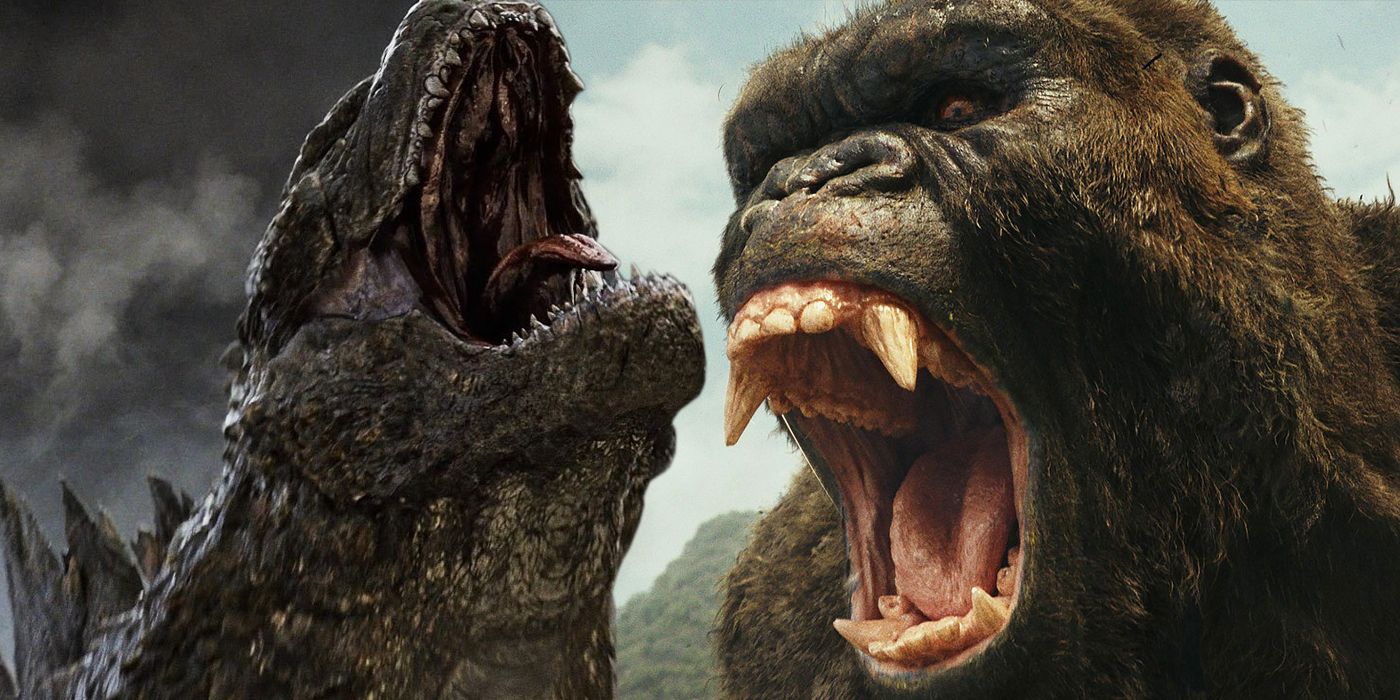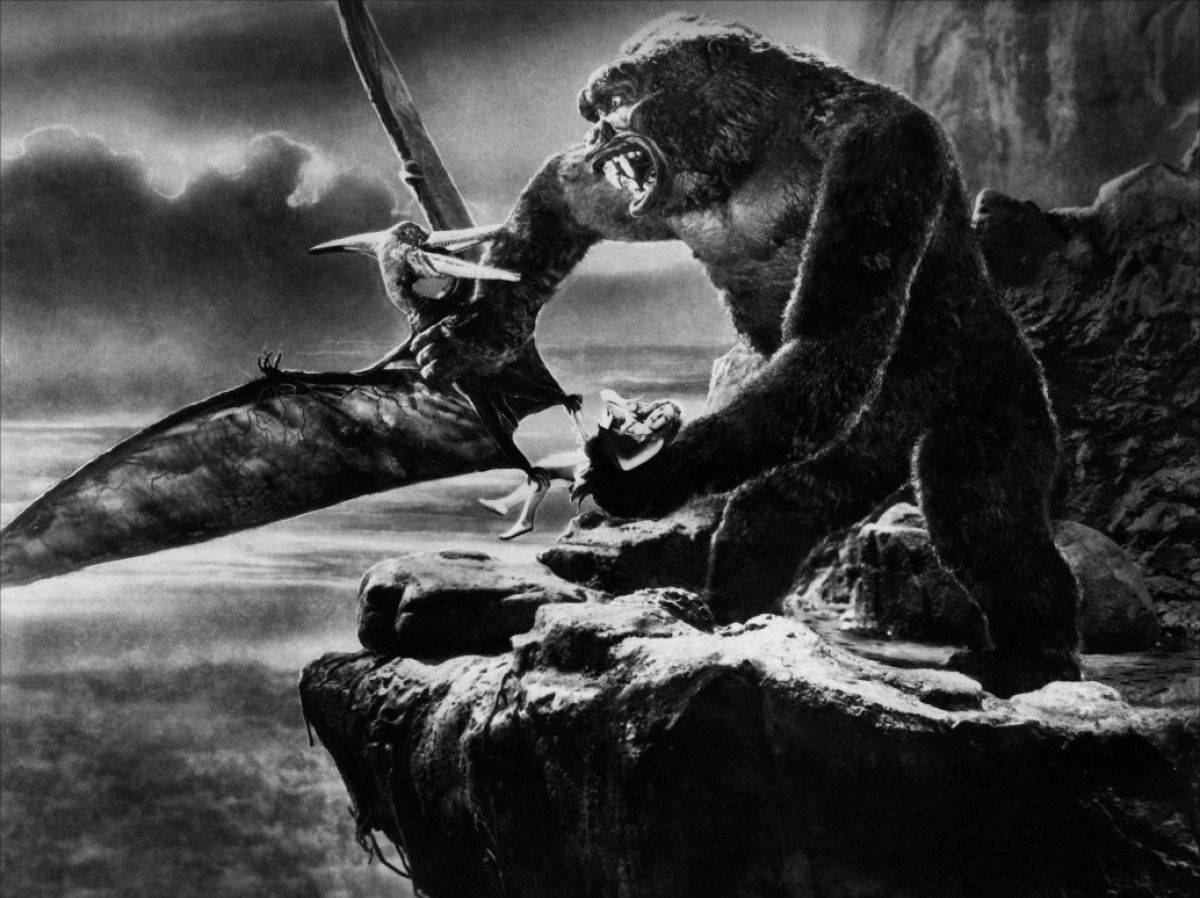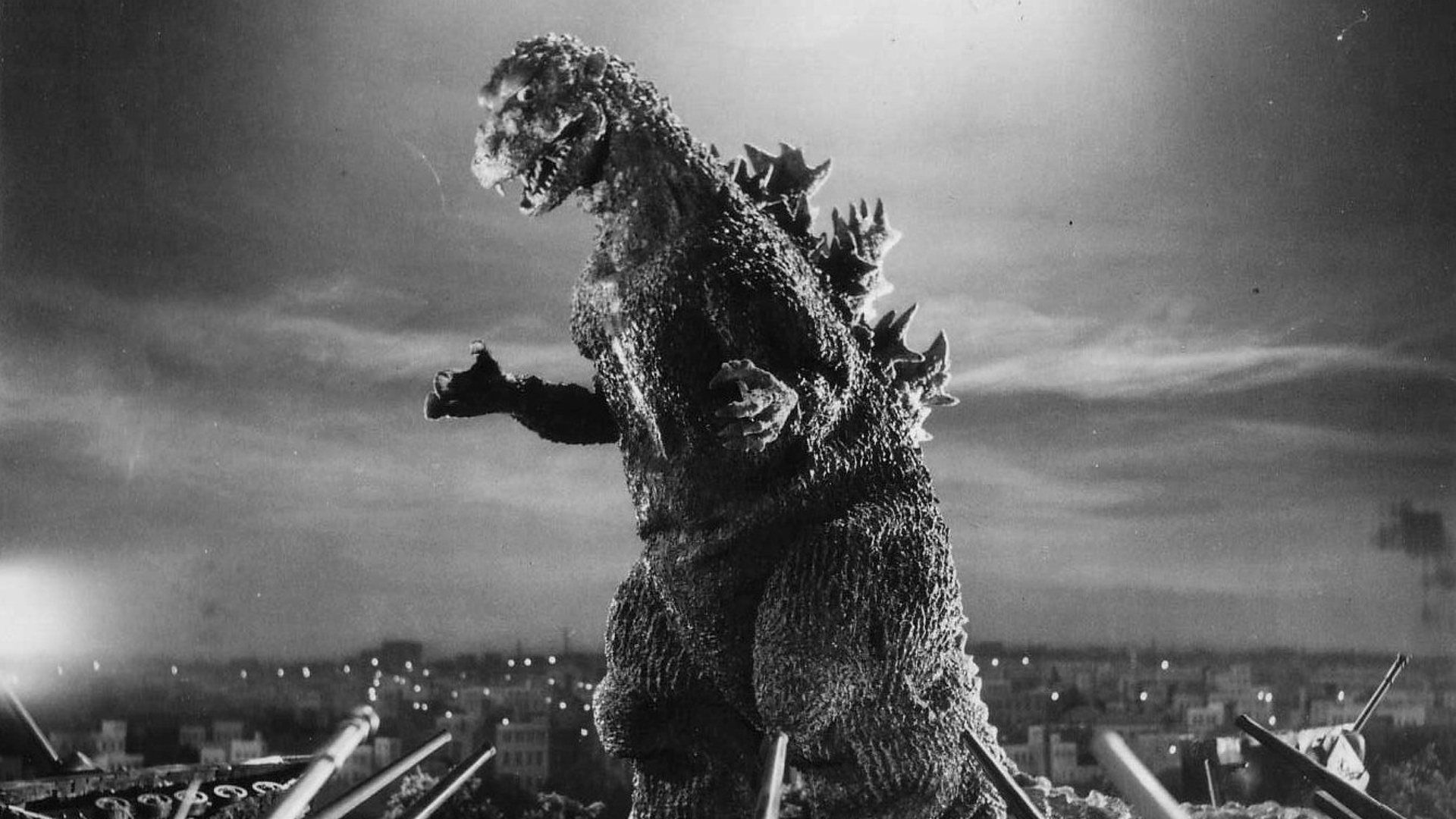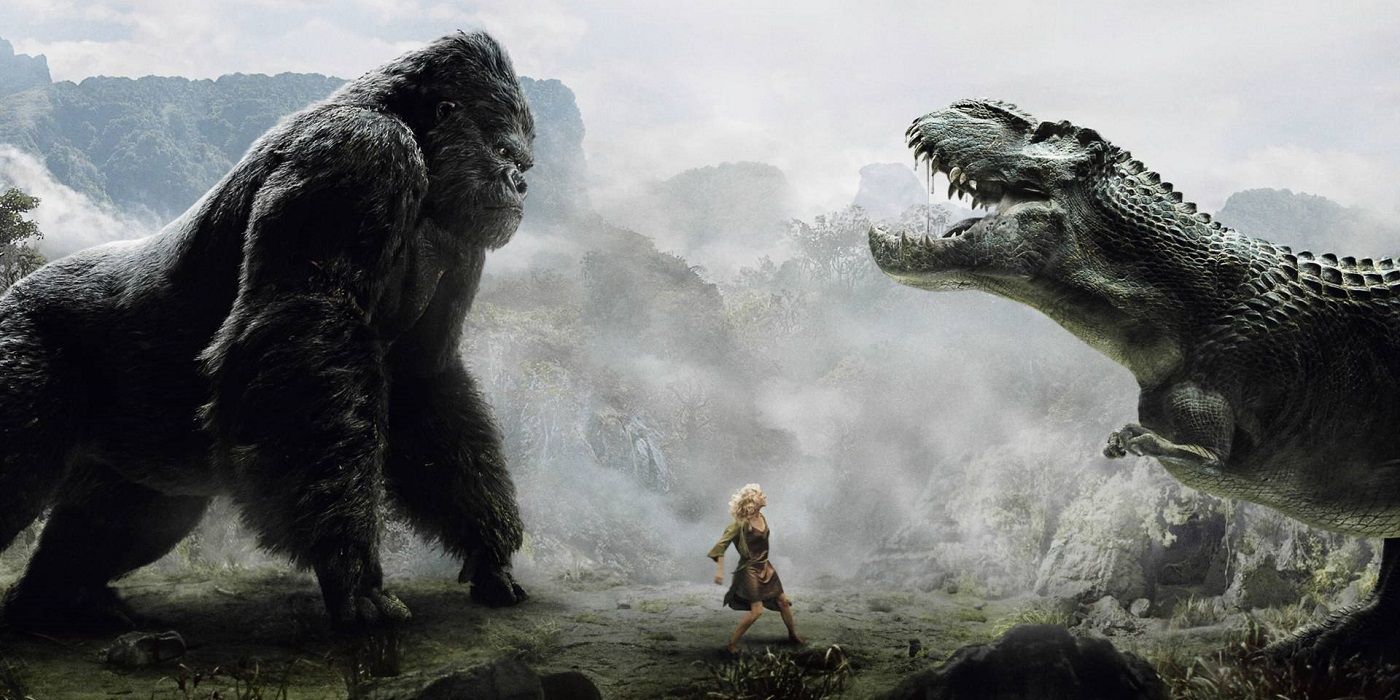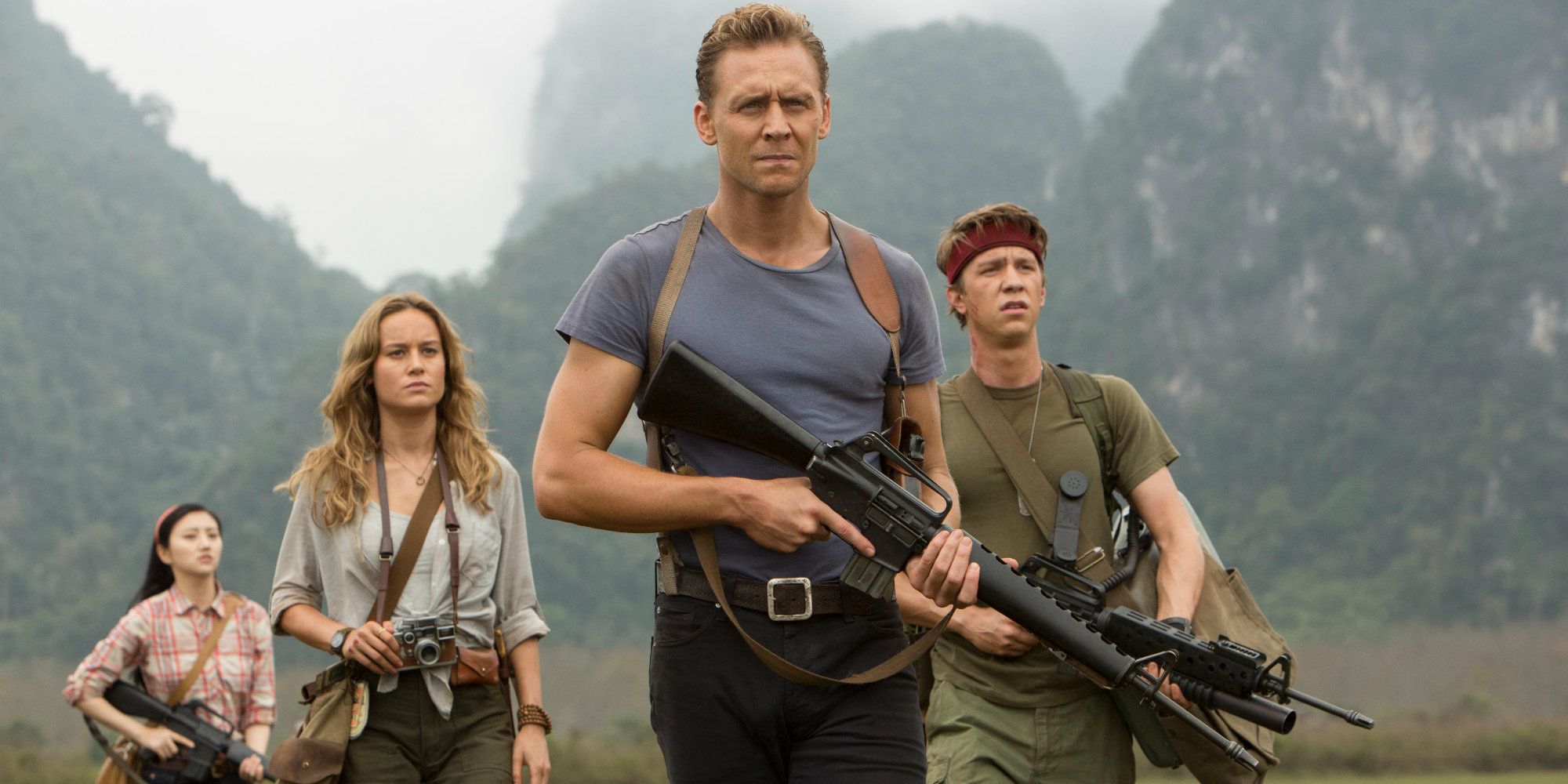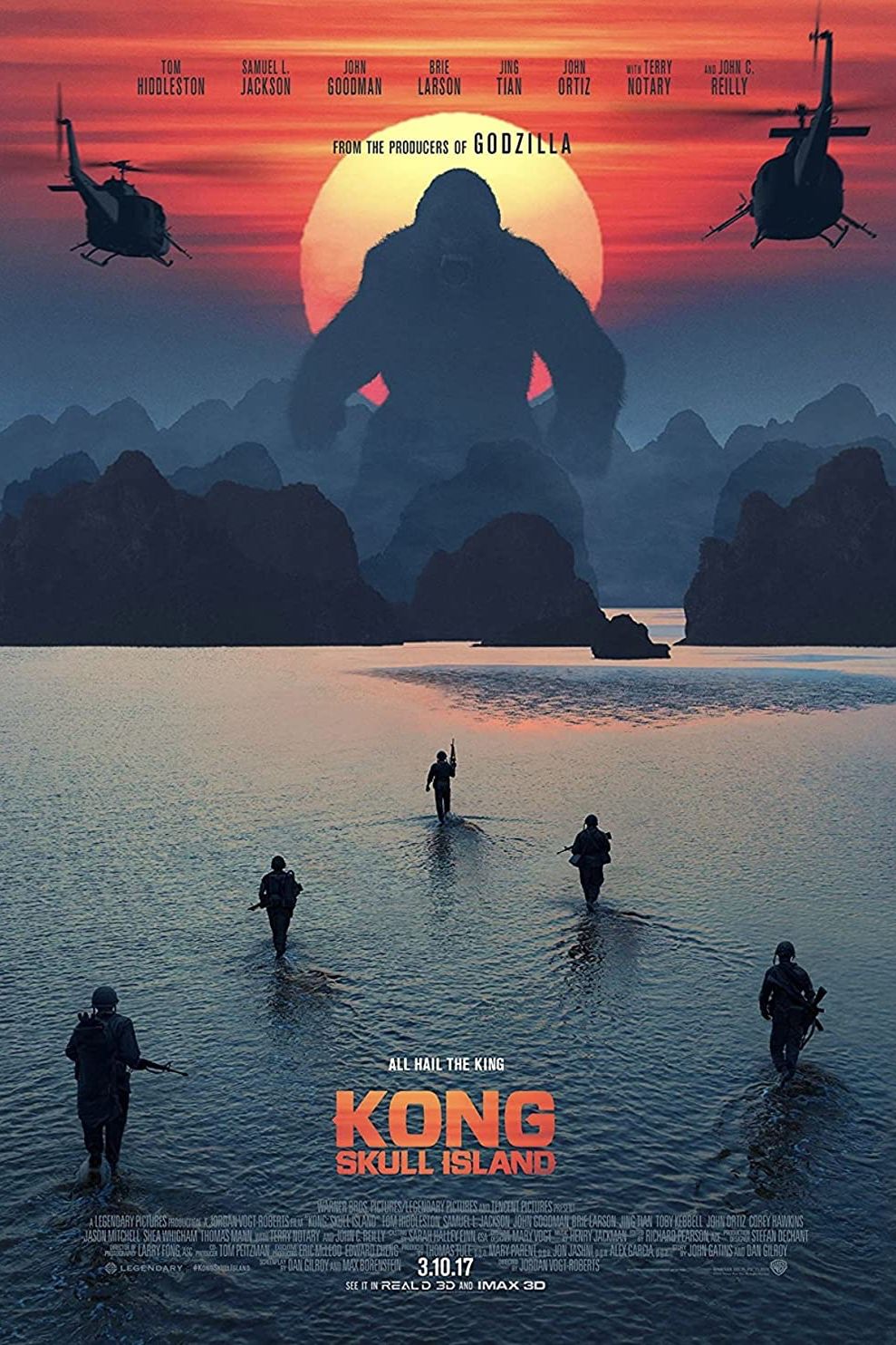Kong: Skull Island is just over a week from release, and its latest trailer signalled a surprising shift in tone from previous marketing material for the latest blockbuster by Legendary Pictures. While the first trailer struck a more serious mood, with obvious Apocalypse Now homages throughout, the next trailer went more comedic, focusing on John C. Reilly's Robinson Crusoe-style stranded lieutenant on the island. The most recent trailer, released with only a fortnight until the film opens to audiences, is more stylized in its editing, with a classic rock musical accompaniment and greater focus on the big ape himself, battling soldiers and the mythical creatures of the island. It’s not unusual for trailers to take such differing approaches in tone and style for marketing purposes (Suicide Squad did so, although that wasn’t necessarily a good sign), as it can show the film’s qualities to as wide an audience as possible. As a stand-alone example, Kong: Skull Island is an interesting example in blockbuster marketing. As an attempt to solidify a franchise, it’s something altogether more fascinating.
Legendary have made no secret of their desire to get into the franchise game. It's par for the course with most major studios in the Marvel age, with Universal returning to their iconic Monsters canon for inspiration and Lionsgate hoping their “hip” take on the Robin Hood mythos will be a fountain of sequel potential. Garth Edwards’ reboot of Godzilla proved audiences were keen to see the icon of Japanese cinema return to the screens, so with the trademark MonsterVerse under their belt, and an announcement at Comic-Con that same year that they had acquired the rights to Mothra, Rodan, and King Ghidorah from Toho, Legendary’s intentions were clear. They even managed to bring Kong under the umbrella of Warner Brothers, away from its decades long-home at Universal, to assure optimum cross-over potential.
The reunion of two of cinema’s greatest monsters is not a surprise. Indeed, they previously battled in the 1962 Japanese kaiju film, imaginatively titled King Kong Vs. Godzilla (Spoiler: Kong won), then reunited in King Kong Escapes (that movie features a giant robotic ape called Mechani-Kong created by evil genius Dr. Who – no, not that one). While their previous collaborations don’t quite reach the heights of their greatest efforts, separately, Kong and Godzilla remain icons of American and Japanese cinema respectively.
King Kong made his debut in the eponymous 1933 film, directed and produced by Merian C. Cooper and Ernest B. Schoedsack. The film followed in a then-popular Hollywood tradition of classic action-adventure stories like Tarzan and Arthur Conan Doyle's The Lost World, as well as “jungle stories” of the un-tamable state of nature and man’s battles with the beasts of the wild. Despite that, studio RKO were reluctant to make the film and only did so when they saw a presentation featuring some of stop-motion animator Willis H. O'Brien's work. The film was a box office success and RKO re-released the film 5 times over the next 23 years. A hastily made sequel, Son of Kong, was churned out a mere 9 months after the original's release and made a healthy profit despite terrible reviews.
Godzilla, in contrast, wouldn't see its debut until 21 years after Kong, but it was an immediate success with Japanese audiences and kick-started the longest continuously running movie franchise of all time. While Godzilla in its original form did receive a North American release, primarily in areas with largely Japanese-American residents, the version that received the wide release in the USA was a heavily re-edited version featuring dubbed dialogue, an added American character to fill in some details, and removal of key political and social themes. This "Americanization" of the story, known as Godzilla: King of the Monsters! proved a hit with audiences and became a TV staple for years to come.
American producers dabbled in the monster genre for many decades, particularly during the sci-fi boom of the 50s and rise of effects superstars like Ray Harryhausen, so a return to Kong was inevitable. The 1976 remake of the original film, also titled King Kong, was a financial success for producer Dino De Laurentiis, but the film itself was rather shambolic. On top of a tonal shift that focused more on campy humour than "man vs wild" drama, Kong himself proved to be a mess in the making. After spending close to half a million dollars on a 40ft tall mechanical Kong, the epic contraption was too cumbersome to operate and was replaced by a hilariously unconvincing man in a monkey suit (at one point, make-up genius Rick Baker was that man in the suit). A very odd sequel, King Kong Lives, starring Linda Hamilton, was released a decade later to little enthusiasm. Kong would not appear on screens for another 20 years, but in the 90s, Hollywood decided to get into the Godzilla game.
Roland Emmerich's 1998 Godzilla, which he also co-wrote, is a relatively faithful story, albeit with an American focus, and a major redesign of the creature itself. Critics hated it, veteran Godzilla actor Kenpachiro Satsuma walked out of a screening of the film, and while it was the 9th highest grossing film of 1998 in the USA, it wasn't the runaway hit Tristar Pictures were hoping for. Godzilla films remained a staple of Japanese cinema during this time, but for Hollywood, both Kong and Godzilla were put on the back-burner, as monster movies lost their lustre.
When Lord of the Rings director Peter Jackson was announced to be remaking King Kong, it was nothing short of an event. As well as a then record breaking $207m budget, the film, which is most faithful to the 1933 original, was a landmark of effects work and saw Andy Serkis take on the role of Kong himself through motion-capture technology that had allowed him to play Gollum. Universal helmed this movie, which had by then entered public domain and had no other studio claiming ownership of it due to the closure of RKO, so it proved to be a costly, if worthwhile venture, becoming the fourth highest grossing film in their history. They did not move forward with sequels, spin-offs or the like, but did install a Kong themed attraction at the Universal Studios theme parks and retained copyright over the new Kong of their film, thus ensuring a few decades of steady profit. Any Kong film to come out in the following years would be a nice nest egg, and in 2014 it was announced they’d team up with Legendary to make Kong: Skull Island.
However, that didn’t happen, and the following year it was announced that Legendary would be returning to their original distributor Warner Bros., thus allowing for the epic cross-over to happen.
On top of a decades-long history as cinema staples, both Kong and Godzilla represent fascinating takes on social and political themes through a blockbuster lens. While its directors rejected any hidden meanings, the 1933 film remains an interesting allegory on racism and colonialism, with Kong scaling the heights of the Empire State Building standing in as a symbol for man’s hubris. In the 1976 remake, Kong climbs the World Trade Centre twin towers before being attacked by soldiers with flamethrowers. The 2005 remake sticks to the period setting of the first film and is more focused expanding the characters, but retains those central ideas.
Meanwhile, politics is in Godzilla’s blood. Less than a decade following the bombings of Hiroshima and Nagasaki, Godzilla was conceived as a metaphor for the destructive power of nuclear weapons. Even as the series progressed and took various shifts in tone, it kept that edge, and director Gareth Edwards used it as the starting point for his 2014 reboot for the MonsterVerse. Whether that element will be in the sequel and Kong: Skull Island remains to be seen, although the heavy focus on the military in the latter suggests at least some will remain.
What makes the possibility of a MonsterVerse franchise so fascinating is its focus on the creatures itself. The humans are incidental. While Marvel and DC thrive on their iconic ensembles, and the Universal Monster series is banking on A-list stars in recognizable horror properties, the MonsterVerse knows nobody will be going to see their films for the actors (sorry, Tom Hiddleston). Kong: Skull Island in particular seems aware of this. The stars may have their moments to shine in the trailers (except for Oscar winner Brie Larson, who doesn’t utter a single word in the first two clips), but the movie’s 1971 setting hints that we won’t be sticking with this bunch for another movie, not when Godzilla is waiting in the 2010s.
The appeal of the MonsterVerse is much more primal than any of the other major franchises knocking on our doors over the next decade and beyond. Who doesn’t want to see giant creatures punch each other to the backdrop of various recognizable cityscapes? That’s not to say such a prospect is an easy sell, nor that it’s an easy story to carry off. Audiences have become used to groundbreaking effects work that used to dazzle us only a few years prior, and if they’re not convinced by what they see, they won’t return for more. It’s also a style that could easily wear thin – how do audiences get invested in fight after fight when the opponents are without a character arc? Of course, that hasn’t stopped the Transformers franchise making billions. Fortunately, this focus on fights over character makes such stories an easy sell for the international markets, where the Chinese box office reigns supreme as the make-or-break card for big budget series. Godzilla made over $77m in China, while the sequel, titled Godzilla: King of the Monsters, is already primed for shooting at Qingdao Movie Metropolis's facility in the country.
For Warner Bros., the MonsterVerse offers a chance to secure further franchise dollars outside of the still-floundering DC Universe, and a genre shift to stand alongside the juggernaut Fast and the Furious films. The iconography is in place and its appeal evident, but with Kong: Skull Island's $190m budget to make back and a review embargo in place, there are concerns over audience enthusiasm for such a series. Perhaps the studio should just heed the words of Ken Watanabe in Godzilla, and let them fight.

